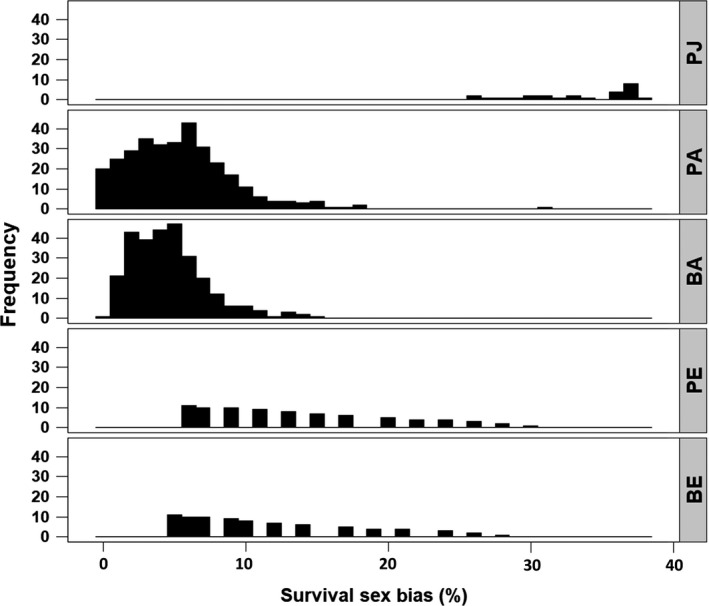Figure 4.

In the Magellanic Penguin population studied, survival rates were higher for males than for females of the same age class and breeding state. The survival sex bias is the percent difference between female and male survival and is relative to male survival. This bias was highest in juveniles and in elder adults. Among adults and elder adults, pre‐breeders (individuals that had not yet bred) had a higher survival bias than did breeders and non‐breeders (individuals that had bred at least once but were not breeding that year). The first letter of the x‐axis category refers to breeding state (P, pre‐breeder; B, breeder or non‐breeder) while the second letter refers to age class (J, juvenile [fledging to age 1]; A, adult [age 1 to 18]; E, elder [age ≥ 19]). Frequency was measured as unique age by time combinations, so sample size is smallest for juveniles (1 age, 27 yr) and largest for adults (18 ages, 27 yr).
